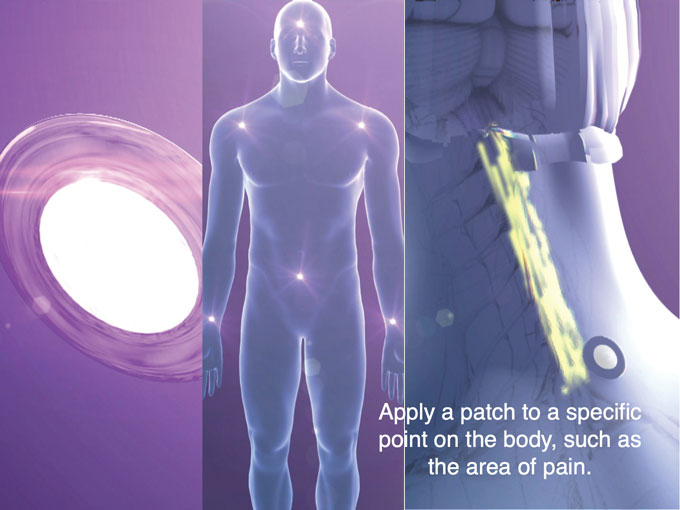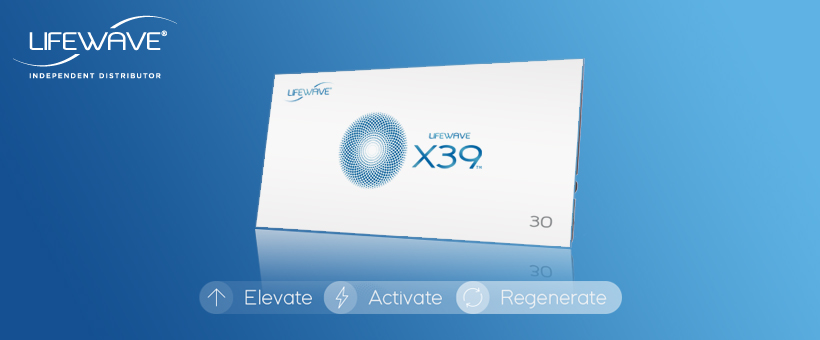Are you tired of spending money on expensive infrared light therapy treatments? Look no further, because we have a solution for you! In this article, we will show you how to craft your very own DIY infrared light therapy devices. With just a few simple materials and a little bit of creativity, you can create a healing solution right in the comfort of your own home. Say goodbye to costly treatments and hello to a more affordable and convenient way to enhance your well-being. So grab your tools and get ready to embark on a DIY journey to better health!
What is Infrared Light Therapy
Definition of Infrared Light Therapy
Infrared light therapy, also known as low-level light therapy or photobiomodulation therapy, is a non-invasive treatment that uses specific wavelengths of infrared light to stimulate cellular activity and promote healing in the body. This therapy has gained popularity in recent years due to its potential benefits in various areas of health and wellness.
How Infrared Light Therapy Works
Infrared light therapy works by delivering targeted light energy to the body’s tissues and cells. When the infrared light is absorbed by the cells, it stimulates a biochemical reaction that enhances cellular function and promotes healing processes. This therapy is believed to improve blood circulation, reduce inflammation, relieve pain, and accelerate tissue repair.
Benefits of Infrared Light Therapy
Infrared light therapy has a wide range of potential benefits for overall health and well-being. Some common benefits include pain relief, improved muscle recovery, enhanced skin health, increased collagen production, reduced inflammation, improved circulation, boosted immune system function, and relaxation of both mind and body. Many people also use infrared light therapy to support a healthy lifestyle and to complement other treatments or therapies.
Understanding DIY Infrared Light Therapy Devices
Types of DIY Infrared Light Therapy Devices
There are various types of DIY infrared light therapy devices available for those who want to craft their own healing solutions. These devices can range from portable handheld devices to floor or tabletop lamps, and even integrated infrared light therapy beds. The choice of device will depend on personal preferences, intended use, and desired customization options.
Importance of Customization
One of the key advantages of DIY infrared light therapy devices is the ability to customize them according to individual needs and preferences. Different individuals may have specific requirements in terms of wavelength, power output, and features. By creating a DIY device, you have the flexibility to design it to meet your unique needs and optimize its effectiveness.
Safety Considerations
While DIY infrared light therapy devices offer flexibility and customization options, it is important to prioritize safety. When building your own device, it is crucial to follow safety guidelines, use appropriate components, and ensure proper electrical connections. Eye protection measures should also be considered to avoid potential damage from direct exposure to infrared light.
Choosing the Right Infrared Light Source
Comparison of Infrared Light Sources
When selecting an infrared light source for your DIY device, there are two main options to consider: LED (Light Emitting Diode) lights and incandescent bulbs. LED lights are known for their energy efficiency, long lifespan, and narrow wavelength range, while incandescent bulbs offer a broader spectrum of infrared light. Understanding the differences between these sources can help you make an informed decision.
LED vs. Incandescent Bulbs
LED lights are a popular choice for DIY infrared light therapy devices due to their efficiency and focused wavelength. They are available in different wavelengths, allowing you to select the one that aligns with your desired therapeutic benefits. On the other hand, incandescent bulbs emit a broader spectrum of infrared light, which some individuals prefer for a more comprehensive treatment.
Wavelength Selection
The choice of wavelength is a crucial factor when it comes to the effectiveness of your infrared light therapy device. Different wavelengths have varying penetration depths and target different tissues and conditions. For example, shorter wavelengths tend to penetrate more superficially and are beneficial for skin-related treatments, while longer wavelengths are ideal for deeper penetration to target muscles and joints.
Power Output and Intensity
The power output and intensity of your DIY infrared light therapy device also play a significant role in its effectiveness. Higher power outputs generally result in deeper penetration and potentially faster therapeutic benefits. However, it is essential to consider safety guidelines and not exceed recommended power levels to avoid potential adverse effects.
Building Your Own Infrared Light Therapy Device
Selecting the Base/Object for Mounting the Light Source
When building your own infrared light therapy device, you will need to select a suitable base or object for mounting the light source. This can be a handheld device, a lamp, or a specially designed frame to create a full-body treatment system. The choice of base or object will depend on the intended use, portability requirements, and overall design of your device.
Wiring and Electrical Connections
Proper wiring and electrical connections are critical for the safe and effective operation of your DIY infrared light therapy device. It is important to follow electrical safety guidelines, use appropriate wiring, and ensure secure connections. If you are not comfortable with electrical work, consulting a professional or referring to reputable DIY guides can help ensure safety and proper functioning.
Assembly and Placement of Infrared Light Source
Once you have selected the base and handled the electrical connections, it is time to assemble and place the infrared light source in your device. Follow the manufacturer’s instructions, if available, or refer to DIY guides that provide step-by-step instructions and recommendations for optimal positioning. Proper placement of the light source is essential to maximize its therapeutic benefits.
Design Considerations for Optimal Usage
To enhance the usability and effectiveness of your DIY infrared light therapy device, consider design elements such as adjustable angles, height adjustments, and ease of use. These features can provide flexibility in targeting specific areas of the body and make the device more comfortable to use. Additionally, incorporating features like timers or programmable options can further optimize your therapy sessions.
Additional Features for Enhanced Therapy
Pulsation and Frequency Control
Some DIY infrared light therapy devices offer the option to control pulsation and frequency settings. This feature allows you to adjust the light output to specific frequencies, which may have additional therapeutic benefits. Pulsation and frequency control can be helpful for targeting specific conditions or preferences.
Heat Elements and Temperature Control
Incorporating heat elements or temperature control features into your DIY infrared light therapy device can provide added therapeutic benefits. Controlled heat can help relax muscles, increase blood flow, and enhance the effectiveness of the light therapy. However, it is important to exercise caution and ensure proper temperature control to avoid burns or overheating.
Timer and Programmable Options
Including a timer or programmable options in your DIY infrared light therapy device can make it more convenient and efficient to use. Timers allow you to set specific treatment durations, ensuring consistent and appropriate exposure. Programmable options enable customization of settings based on personal preferences and treatment objectives.
Safety Precautions and Guidelines
Eye Protection Measures
Protecting your eyes from direct exposure to infrared light is crucial to prevent potential damage. When using an infrared light therapy device, ensure you wear appropriate eye protection, such as goggles specifically designed for this purpose. By protecting your eyes, you can enjoy the benefits of the therapy while minimizing the risk of eye-related complications.
Avoiding Overexposure and Burns
While infrared light therapy is generally safe, it is important to avoid overexposure to prevent any adverse effects. Follow the recommended treatment durations, power levels, and intensity guidelines specified for your device. Overexposure to infrared light can lead to burns, skin irritation, or other undesirable outcomes. It is always better to start with shorter sessions and gradually increase the duration or intensity if necessary.
Cleaning and Maintenance
Regular cleaning and maintenance of your DIY infrared light therapy device are essential to ensure its longevity and optimal performance. Follow the manufacturer’s recommendations or refer to reliable DIY guides for cleaning instructions. Inspect the device regularly for any signs of wear or damage and address them promptly to maintain its safety and efficacy.
Cold Compress and Post-Session Care
After each infrared light therapy session, consider using a cold compress or applying a cooling gel to soothe the treated area and minimize any potential inflammation. Cold treatments can help complement the therapeutic effects of the light therapy and provide additional comfort. Additionally, maintain good post-session care by staying hydrated, getting enough rest, and allowing your body to recover naturally.
DIY Infrared Light Therapy Device Projects
Portable Handheld Device
A portable handheld DIY infrared light therapy device offers flexibility and convenience for targeted treatments on various areas of the body. This project typically involves selecting a suitable light source, wiring, and assembling the components into a handheld device. Many portable handheld devices also incorporate features like adjustable angles or programmable options for added customization.
Floor or Tabletop Lamp
If you prefer a stationary device for broader treatment coverage, consider building a floor or tabletop lamp for your DIY infrared light therapy project. This type of device can be designed to accommodate multiple light sources for maximum therapeutic benefits. Incorporating adjustable height, angle, and intensity control features can further enhance usability and optimize treatment effectiveness.
Integrated Infrared Light Therapy Bed
For those looking to create a comprehensive infrared light therapy solution, building an integrated infrared light therapy bed can provide full-body coverage and relaxation. This project involves constructing a sturdy frame with evenly spaced light sources, wiring and electrical connections, and ensuring proper safety measures. An integrated infrared light therapy bed offers a luxurious and immersive experience for therapeutic treatments.
Alternative Uses for DIY Infrared Light Therapy Devices
Skin Rejuvenation and Acne Treatment
Infrared light therapy has shown potential in improving skin health and treating conditions such as acne. The specific wavelengths of infrared light stimulate collagen production, reduce inflammation, and improve blood flow, resulting in clearer and healthier-looking skin. By crafting your own DIY infrared light therapy device, you can tailor the treatment to target specific areas prone to acne or areas that require rejuvenation.
Pain Relief and Injury Recovery
One of the primary benefits of infrared light therapy is its ability to alleviate pain and support injury recovery. The targeted light energy penetrates deep into the tissues, promoting blood circulation, reducing inflammation, and accelerating the repair of damaged cells. DIY infrared light therapy devices can be used to complement other pain management strategies or aid in the recovery process for various injuries and conditions.
Improved Blood Circulation
By stimulating blood circulation, infrared light therapy can help improve overall cardiovascular health. The increased circulation enhances oxygen and nutrient delivery to the body’s tissues, promoting faster recovery and supporting optimal organ function. DIY infrared light therapy devices offer a convenient and cost-effective way to incorporate blood circulation benefits into your health routine.
Boosting Immune System
A healthy immune system is essential for overall well-being and resistance to illness. Infrared light therapy has been shown to stimulate the immune system, enhancing its ability to fight infections and promote healing. Crafting your own DIY infrared light therapy device allows you to incorporate immune-boosting treatments into your self-care routine and support your body’s natural defense mechanisms.
Mental Health and Relaxation
Infrared light therapy not only benefits the body but also offers potential advantages for mental health and relaxation. The soothing warmth and gentle light can help create a calming and peaceful environment, reducing stress and improving overall mood. By incorporating infrared light therapy into your DIY projects, you can enhance your mental well-being and create moments of relaxation and self-care.
Resources and Tools for DIYers
Recommended Infrared Light Sources
When embarking on a DIY infrared light therapy project, it is important to select reliable and high-quality infrared light sources. Look for reputable manufacturers that offer a range of wavelengths and power options to suit your specific needs. Consult online resources, product reviews, and recommendations from experienced DIYers to help guide your decision-making process.
DIY Guides and Tutorials
Numerous DIY guides and tutorials are available online, providing step-by-step instructions and valuable insights for building your own infrared light therapy devices. These resources can offer guidance on selecting components, wiring, assembly, and customization options. Make sure to choose trustworthy sources and refer to reputable communities or forums for additional assistance or troubleshooting advice.
Best Practices and Safety Standards
To ensure the safety and effectiveness of your DIY infrared light therapy device, it is important to familiarize yourself with best practices and safety standards. Reputable sources and communities focused on DIY projects can provide valuable information on safety guidelines, recommended exposure times, and other important considerations. By following established standards, you can enjoy the benefits of your device while minimizing risks.
Online Communities and Support
Engaging with online communities and seeking support from fellow DIYers can be beneficial when undertaking infrared light therapy projects. These communities can offer valuable insights, share experiences, and provide assistance or guidance throughout your DIY journey. Joining online groups or forums can help you connect with like-minded individuals and access a wealth of knowledge and support.
Conclusion
Benefits of DIY Infrared Light Therapy Devices
Crafting your own DIY infrared light therapy device offers numerous benefits, including customization options, cost-effectiveness, and the flexibility to create an ideal solution for your specific needs. By choosing the right infrared light source, building a sturdy device, and incorporating additional features, you can enjoy the therapeutic benefits and empower yourself in addressing various health and wellness concerns.
Empowerment through Self-Crafting
Engaging in DIY infrared light therapy projects allows you to take control of your own health and well-being. By crafting your own device, you gain a deeper understanding of the technology, its applications, and the potential benefits it can provide. This sense of empowerment can lead to increased self-care, improved outcomes, and a greater connection to your own healing journey.
Caution and Responsible Usage
While DIY infrared light therapy devices can offer exciting opportunities for self-care and healing, it is important to approach their usage with caution and responsibility. Prioritize safety guidelines, follow recommended exposure times and power levels, and seek professional assistance or advice when needed. By being mindful of responsible usage, you can maximize the benefits of your DIY device while ensuring your well-being.





